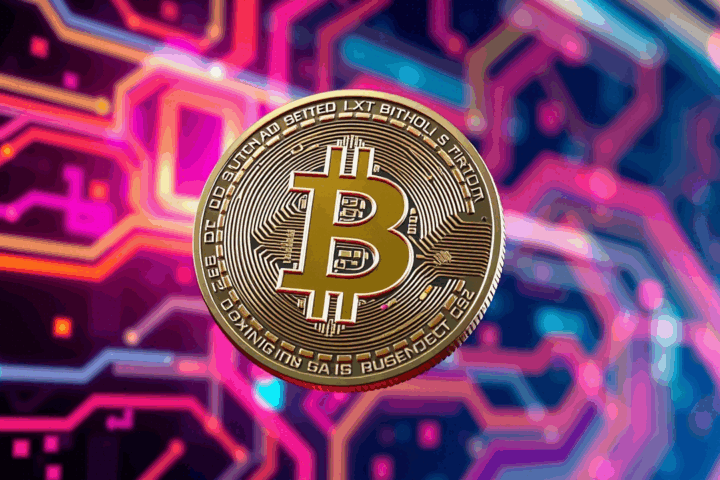Bitcoin is seeing unprecedented demand from ETFs, which now hold over $70 billion worth of Bitcoin, amounting to 5% of the total Bitcoin supply. This remarkable accumulation has sparked discussions about a looming supply crunch and the potential long-term implications for Bitcoin’s price and adoption.
On June 9, it was reported that spot Bitcoin ETFs purchased 25,700 BTC in a single week, dwarfing the 2,250 BTC produced by miners. This trend highlights a growing imbalance between Bitcoin’s supply and demand, with ETFs demonstrating substantial interest from traditional investors.
Daniel, a prominent X user, elaborated on the situation for The Shib Daily, emphasizing the significance of the years 2024 and 2025 for Bitcoin. He pointed out that the combination of high ETF demand, Bitcoin halving events, and significant amounts of Bitcoin leaving exchanges could lead to an imminent supply crunch. This scenario could compel more institutions and even nation-states to reconsider their stance on Bitcoin.
He suggested that as institutions and nation-states become more intrigued by Bitcoin, either as a reserve asset or legal tender, this interest would inevitably trickle down to the general public. Those who have never invested in Bitcoin might become curious about its persistent growth, while previous investors could seek a deeper understanding of its value proposition.
This increased curiosity and education about Bitcoin could lead to higher levels of acceptance and demand. People would start recognizing the importance of “hodling” and “stacking sats”, further bolstering Bitcoin’s reputation as a reliable store of value.
Drawing parallels to gold, which experienced an eight-year bull run following the approval of the first gold ETF, he noted that it would be naive to think Bitcoin could fall below the $46,000 mark—the price at which the Bitcoin ETF was approved. The current Bitcoin price of $70,000 might soon seem like a bargain as the anticipated bull run progresses.
In the prolonged bull run, it is more likely this time because more investors are treating Bitcoin as a commodity rather than a speculative asset. This shift in perception encourages holding rather than selling, potentially driving prices higher well beyond 2026.
The surging demand from ETFs also poses challenges for Bitcoin miners. This discrepancy could lead to a restructuring in the mining industry. Smaller, private miners might struggle to cover their operational costs post-halving and could be forced to join mining pools to stay profitable. This shift could lead to increased centralization in mining pools, although committed miners can switch pools to maintain decentralization. Industrial-scale miners could face financial strain, especially if investors prefer Bitcoin itself over mining stocks. The only way miners can sustain current operations is if Bitcoin’s price doubles, compensating for the reduced block rewards post-halving.
Despite short-term financial challenges for miners, the long-term outlook appears positive. The popularity of Bitcoin and ETFs is expected to attract more mining operations, enhancing competition and network security. A more secure, tamper-proof network would benefit the entire Bitcoin ecosystem.
This way, the supply crunch might occur sooner than we anticipate. As ETFs and institutional investors continue to accumulate significant amounts of Bitcoin, the available supply for retail investors and other market participants diminishes. This reduced availability can create upward pressure on prices, as the increased demand is met with a finite and shrinking supply of Bitcoin on exchanges.
Moreover, the psychological impact of a supply crunch cannot be understated. As more investors and institutions realize the scarcity of Bitcoin, the FOMO (fear of missing out) can drive even more aggressive buying behavior. This could lead to a feedback loop where rising prices attract more investors, further reducing the available supply and pushing prices higher. The combination of limited new supply from mining and large-scale accumulation by ETFs and institutional investors sets the stage for a significant and sustained increase in Bitcoin’s market value.
The current dynamics between ETF demand, Bitcoin supply, and mining economics suggest that Bitcoin is on the cusp of significant developments. The coming years could be decisive for Bitcoin’s adoption and integration into mainstream finance. For investors, institutions, and nation-states, the choice is clear: participate in the evolving Bitcoin economy or risk being left behind. As Bitcoin continues to prove its resilience, the future promises an exciting ride for all stakeholders.
Disclaimer: Saha Swatilakha has positions in SHIB, BTC, ETH, LTC, BCH, USDT, MATIC, DOGE, SOL, TRX, XRP, BNB, etc. This article is provided for informational purposes only and should not be construed as financial advice.
The Shib Magazine and The Shib Daily are the official publications of the Shiba Inu cryptocurrency project. Readers are encouraged to conduct their own research and consult with a qualified financial adviser before making any investment decisions.










